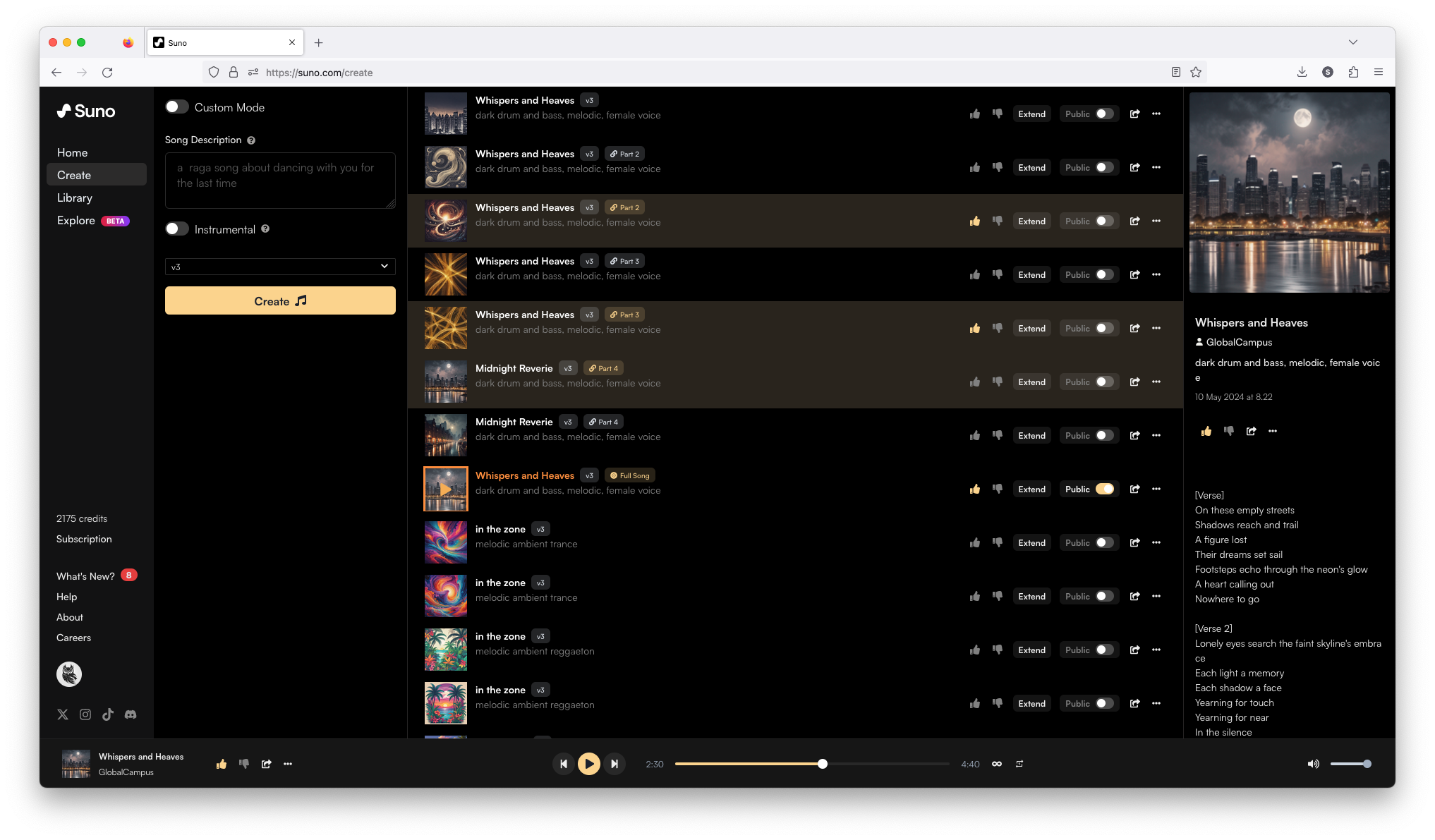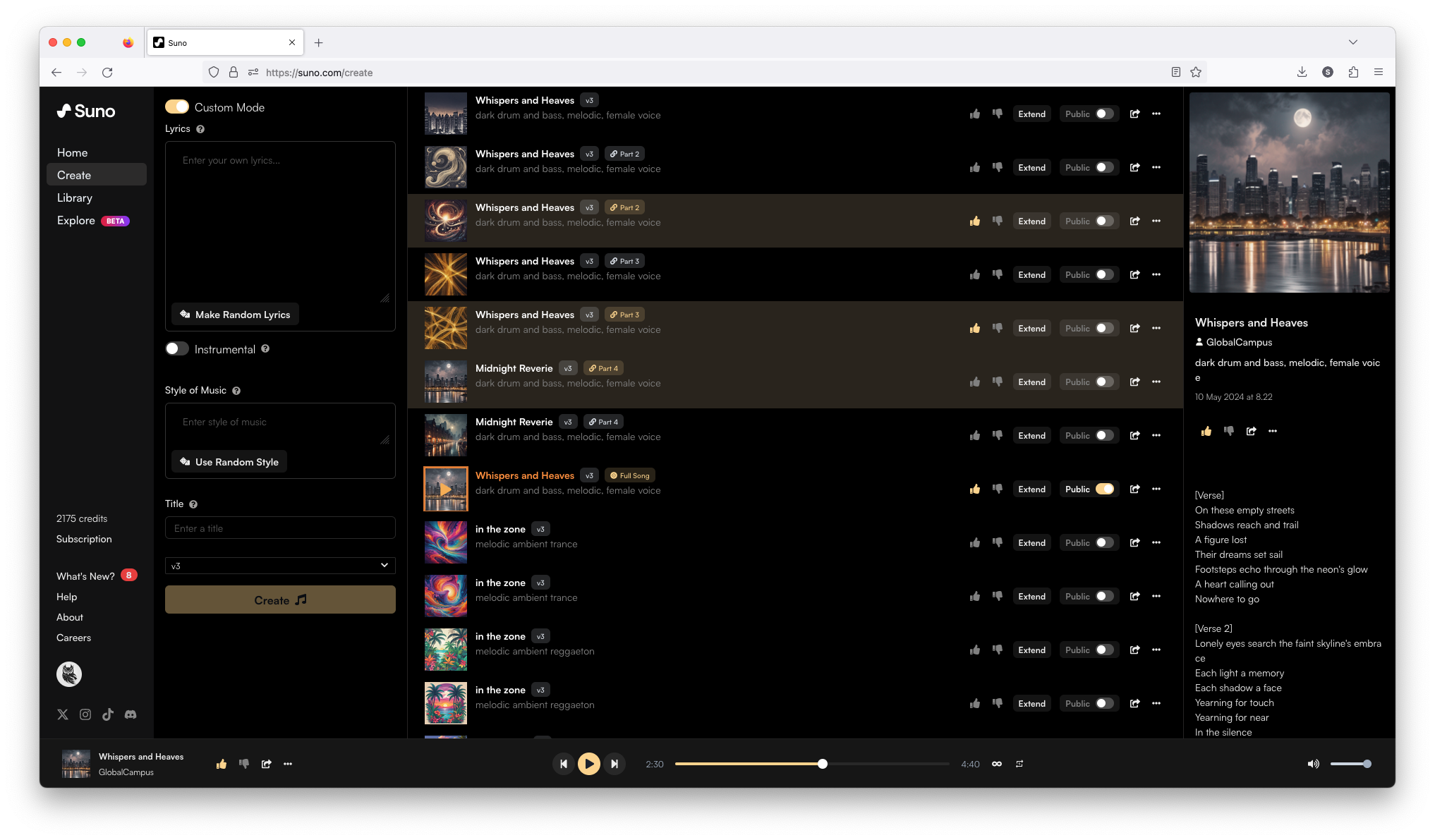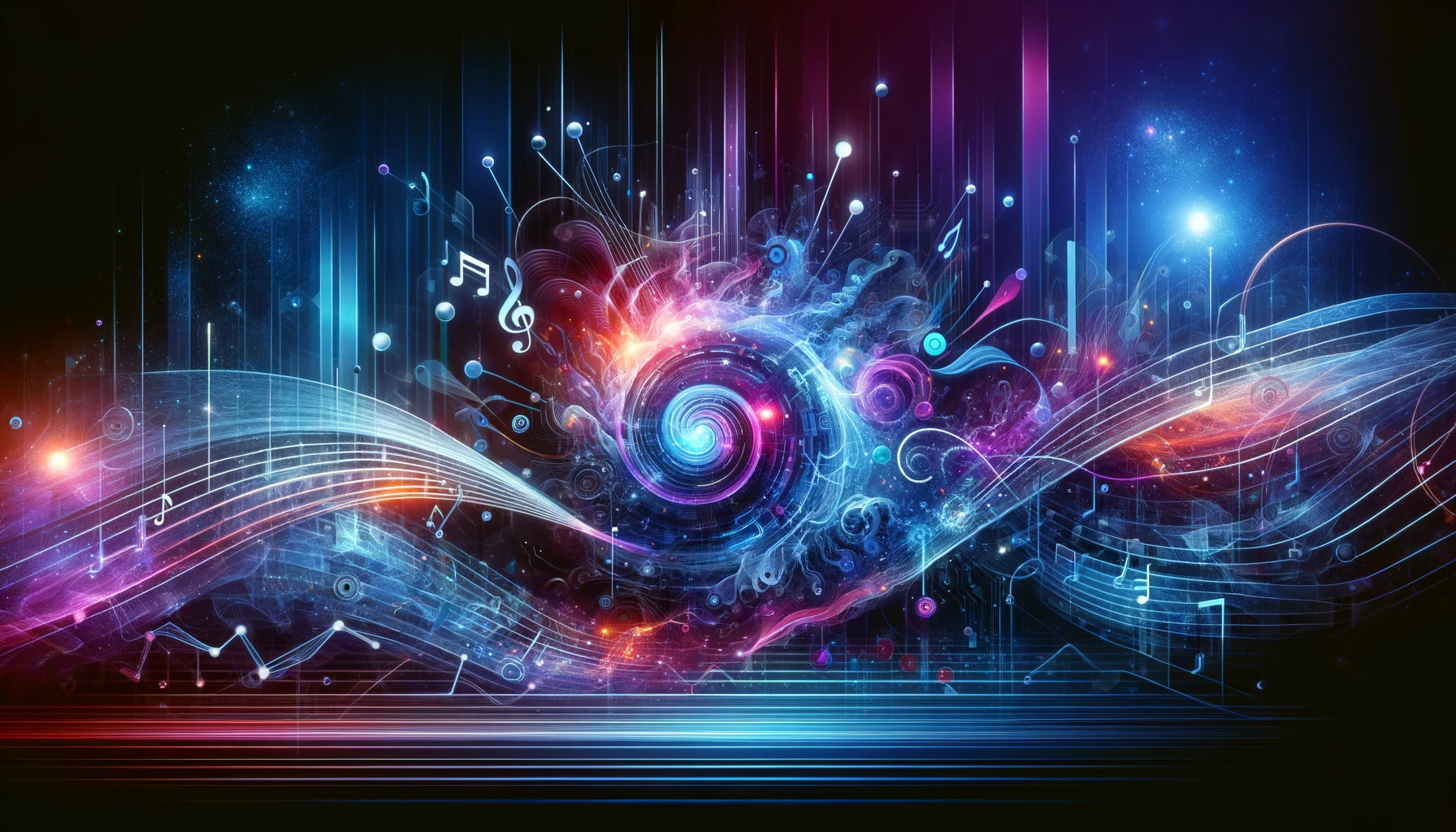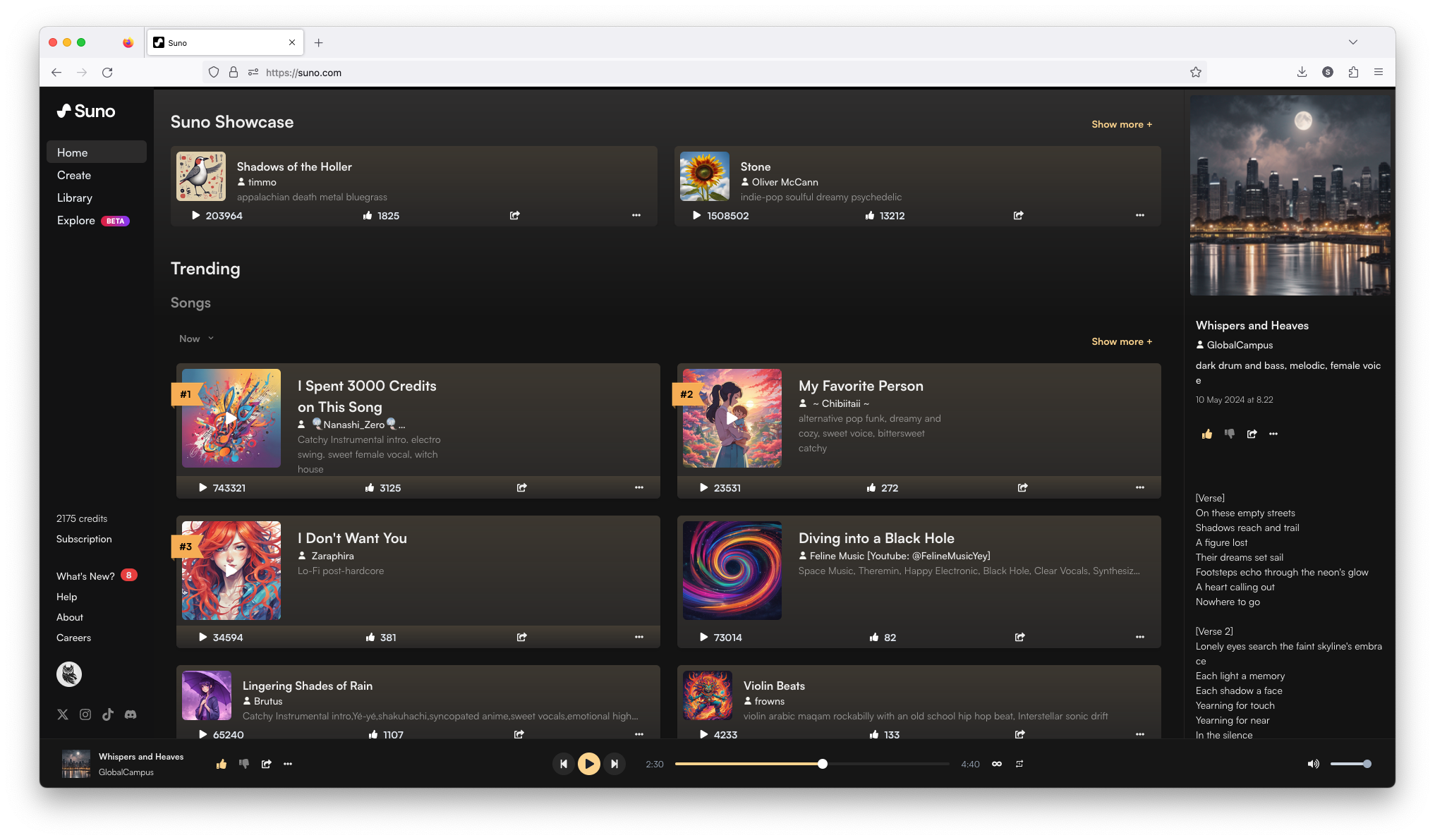Introduction
Generative artificial intelligence (GenAI) has revolutionised various creative fields, from text-based tools like ChatGPT to visual arts with platforms like Midjourney. Now, this wave of innovation is entering the world of music creation.
Music creation has traditionally required a mix of creativity, technical skills, and often expensive equipment. However, GenAI is disrupting this process too, significantly lowering the threshold and making it accessible to everyone. One player in this new era of AI-driven music is Suno.AI, a tool designed to bridge the gap between musical ideas and tangible compositions.
What is Suno.AI?
Suno.AI is an easy-to-use, browser-based GenAI tool that allows users to generate music from text prompts, enabling even those without musical training to create professional-grade compositions. Music in this context contains singing voices too, which is quite impressive if you consider how not too long ago synthetically generated ordinary spoken words would sound… well, synthetic, not human-like.
Core Features:
• Text-to-Music Generation: Suno.AI allows users to input text prompts that the GenAI then converts into musical compositions. This includes both instrumental and as mentioned vocal elements, thanks to its two primary models, Bark and Chirp. These are the two primary models used by Suno.AI to generate music from text prompts. Bark focuses on producing high-quality, human-like vocal elements, enabling the AI to create songs with realistic singing voices. Chirp, which is still in its Alpha phase, specialises in generating complex instrumental compositions. Together, these models allow Suno.AI to produce a wide range of musical outputs, from fully vocal tracks to instrumental pieces, across various genres.
• Genre Versatility: Capable of producing music across a wide array of genres, from pop and rock to classical and world music.
• Customisation: Users can specify elements like music genre even come up with their own genre which could be a mixture of known ones, input own lyrics or have suno.ai create custom lyrics based on their prompt.
• Export and Sharing: Music can be exported as audio files or video file and shared directly on platforms like X, Facebook or via email.
Very quick overview of Suno.AI
Step-by-Step Guide:
• Create an Account: Visit the Suno.AI website and sign up for a free account.
• Enter a Text Prompt: In the ‘Create’ section, describe the style and theme of the song you want to generate. For example, “an upbeat pop song about friendship”.

• Generate and Edit: Click the generate button to create your song. You can further refine the output by editing the text prompt or using the tool’s features to extend and adjust the composition.

• Download and Share: Once satisfied, download your song and share it if you feel like it.
Listen to the audio track Whispers and Heaves created with Suno.AI
Watch the “video” created by Suno.AI
Ethical Considerations
The rise of AI in music creation, exemplified by tools like Suno.AI, has sparked significant ethical debates, particularly over the use of copyrighted materials in training datasets. In an article from 80.lv published in April 2024, concerns were raised about the likelihood of AI models like Suno.AI being trained on copyrighted music without authorisation. These concerns were further substantiated, when eg. recently published articles from Music Business Worldwide and Insurance Journal revealed that Suno.AI had admitted to using unlicensed music tracks in their training process.
This practice has drawn sharp criticism from the music industry and led to legal action by the Recording Industry Association of America (RIAA). The use of copyrighted material without proper licensing not only infringes on intellectual property rights but also devalues the original work of artists, highlighting the urgent need for clear ethical and legal standards in the AI music industry. There is an interesting Hardfork podcast episode with the RIAA’s chairman Mitch Glazier discussing the lawsuit. Watch it on Youtube or listen to the podcast if you will.
There is a whole different discussion looming which at some point should be thematised. How original is GenAI created artwork? What do you get? Nothing new really, you could argue and in this case only tunes based on the training data, so really just modified iterations. The debate around the originality and authenticity of AI-generated art is ongoing. As Ezra Klein an opinion writer for the NY Times observes:
What makes so much A.I. art so bad, in my opinion, is that it’s so generic. These are generative systems. We keep calling them generative. But generative is so — when we use that term, it usually means it helped you get somewhere new. But these systems are mimics.
Conclusion
Suno.AI represents a significant step forward in the intersection of technology and creativity whether you agree with Suno.AI’s practices or not. By making music creation more accessible, it opens up new possibilities for both amateur and professional musicians. However, it also brings to the fore essential ethical considerations as discussed above – that need to be addressed to ensure its sustainable and fair use.
As we explore and adopt new technologies like Suno.AI, it is crucial to remain critical and mindful of the ethical pitfalls. Ensuring transparency, respecting intellectual property rights, and safeguarding user privacy are paramount. Embrace the innovation, but approach with caution and responsibility.
Header image created with Midjourney.


